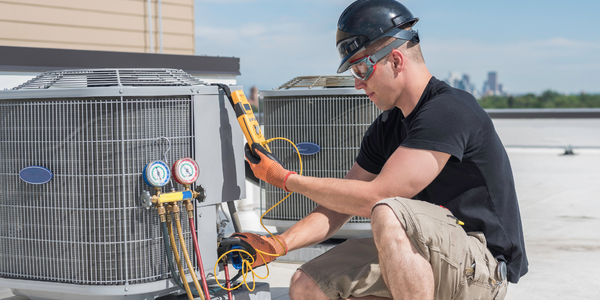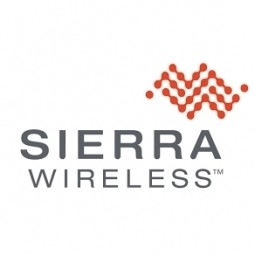
Technology Category
- Application Infrastructure & Middleware - Middleware, SDKs & Libraries
- Networks & Connectivity - Global Navigation Satellite System (GNSS)
Applicable Industries
- Buildings
- Equipment & Machinery
Applicable Functions
- Facility Management
- Maintenance
Use Cases
- Asset Health Management (AHM)
- Predictive Maintenance
Services
- System Integration
The Customer
Not Disclosed
About The Customer
The customer is a company that was founded in the early 1900s and has grown to become one of the world’s largest manufacturers of heating, ventilation, and air conditioning (HVAC) systems. The company's HVAC systems are typically installed in large-scale developments such as college campuses, commercial office buildings, and hospitals. The company was looking to leverage the Internet of Things (IoT) to enhance the capabilities of its HVAC systems, particularly in the area of predictive maintenance.
The Challenge
The company, a leading manufacturer of heating, ventilation, and air conditioning (HVAC) systems, was seeking to leverage the Internet of Things (IoT) to enhance the capabilities of its large-scale HVAC systems. These systems are typically installed in large developments such as college campuses, commercial office buildings, and hospitals. The company was particularly interested in enabling predictive maintenance, as servicing major HVAC systems is expensive and a prolonged outage can cause significant disruption. However, implementing a predictive maintenance system involves building out a complex IoT architecture. A large number of sensors and devices have to be connected to a centralized management system. The company may have hundreds if not thousands of HVAC assets in the field, all of different types and models. These devices may be spread over different regions, which means managing and negotiating with multiple network operators. To enable remote monitoring, there also has to be a stable and secure connectivity.
The Solution
The company opted for the FX30 Gateway by Sierra Wireless, a solution that could support advanced functionality for its large-scale HVAC systems, including predictive maintenance. The FX30 is designed for low power consumption and provides a sound platform for IoT connectivity. Sierra’s Enhanced Carrier Connectivity (ECC) solution simplifies the connectivity aspect of the IoT equation. ECC provides secure access to multiple Tier-1 networks throughout the US, so the company did not have to manage multiple SIM vendors. There is one point of accountability and one invoice, which greatly simplifies management. The company can closely track spending, with real-time usage information and put in alerts to prevent over-spends. Sierra’ Network Operation’s center is constantly monitoring the core network to pro-actively prevent any service disruptions. The result is reliable connectivity with minimal downtime.
Operational Impact
Quantitative Benefit

Case Study missing?
Start adding your own!
Register with your work email and create a new case study profile for your business.
Related Case Studies.

Case Study
Smart Water Filtration Systems
Before working with Ayla Networks, Ozner was already using cloud connectivity to identify and solve water-filtration system malfunctions as well as to monitor filter cartridges for replacements.But, in June 2015, Ozner executives talked with Ayla about how the company might further improve its water systems with IoT technology. They liked what they heard from Ayla, but the executives needed to be sure that Ayla’s Agile IoT Platform provided the security and reliability Ozner required.

Case Study
IoT enabled Fleet Management with MindSphere
In view of growing competition, Gämmerler had a strong need to remain competitive via process optimization, reliability and gentle handling of printed products, even at highest press speeds. In addition, a digitalization initiative also included developing a key differentiation via data-driven services offers.

Case Study
Predictive Maintenance for Industrial Chillers
For global leaders in the industrial chiller manufacturing, reliability of the entire production process is of the utmost importance. Chillers are refrigeration systems that produce ice water to provide cooling for a process or industrial application. One of those leaders sought a way to respond to asset performance issues, even before they occur. The intelligence to guarantee maximum reliability of cooling devices is embedded (pre-alarming). A pre-alarming phase means that the cooling device still works, but symptoms may appear, telling manufacturers that a failure is likely to occur in the near future. Chillers who are not internet connected at that moment, provide little insight in this pre-alarming phase.

Case Study
Premium Appliance Producer Innovates with Internet of Everything
Sub-Zero faced the largest product launch in the company’s history:It wanted to launch 60 new products as scheduled while simultaneously opening a new “greenfield” production facility, yet still adhering to stringent quality requirements and manage issues from new supply-chain partners. A the same time, it wanted to increase staff productivity time and collaboration while reducing travel and costs.

Case Study
Energy Saving & Power Monitoring System
Recently a university in Taiwan was experiencing dramatic power usage increases due to its growing number of campus buildings and students. Aiming to analyze their power consumption and increase their power efficiency across 52 buildings, the university wanted to build a power management system utilizing web-based hardware and software. With these goals in mind, they contacted Advantech to help them develop their system and provide them with the means to save energy in the years to come.

Case Study
Integration of PLC with IoT for Bosch Rexroth
The application arises from the need to monitor and anticipate the problems of one or more machines managed by a PLC. These problems, often resulting from the accumulation over time of small discrepancies, require, when they occur, ex post technical operations maintenance.



